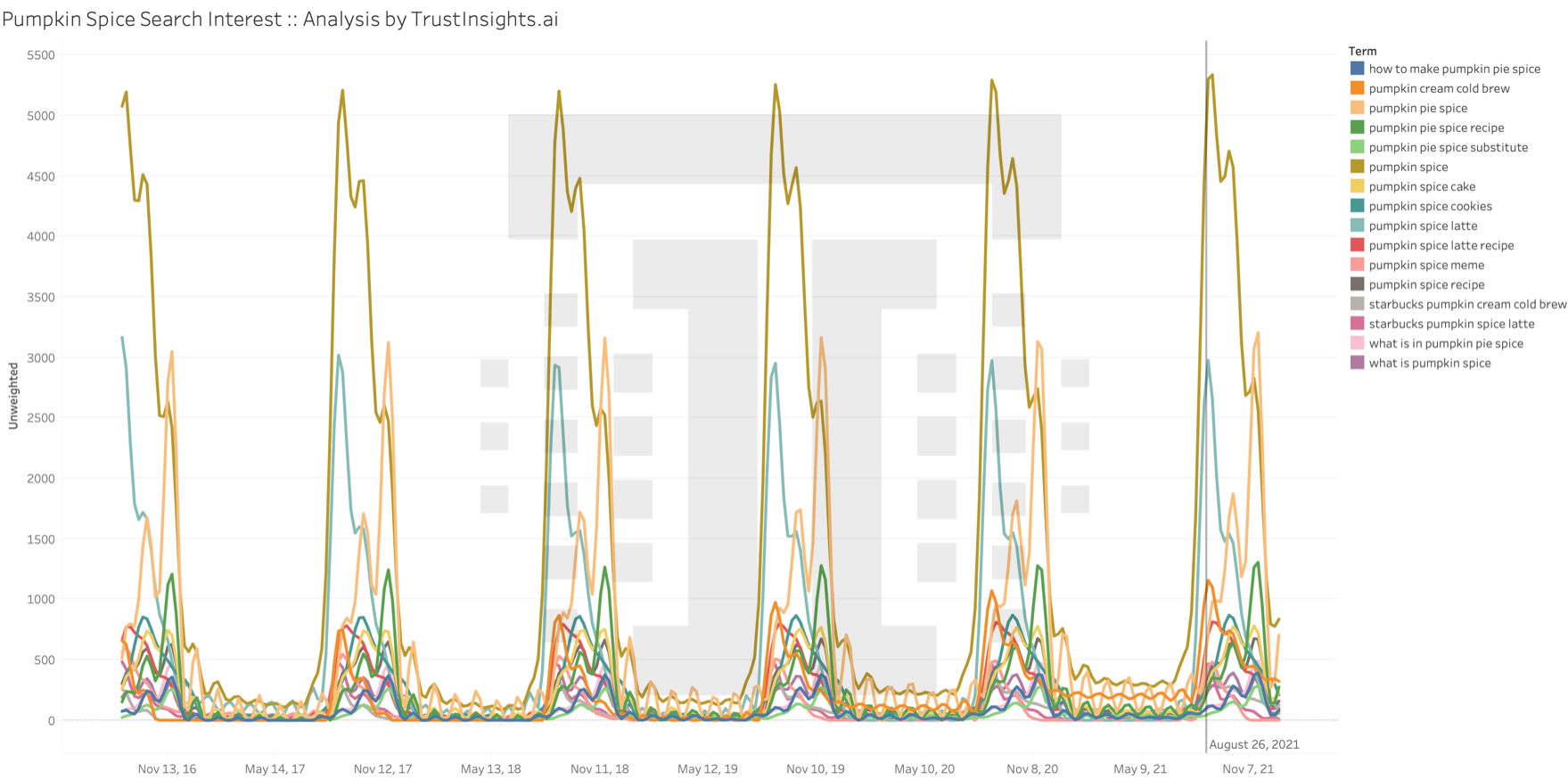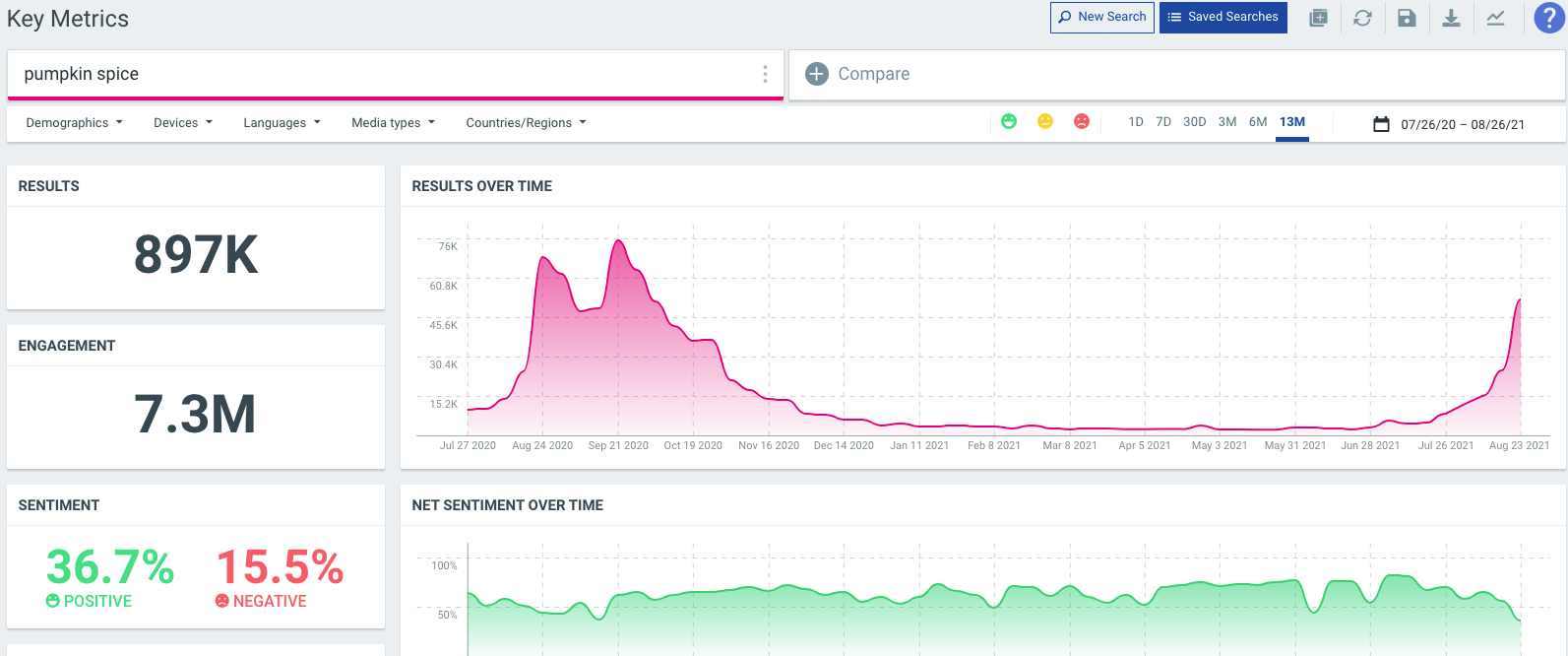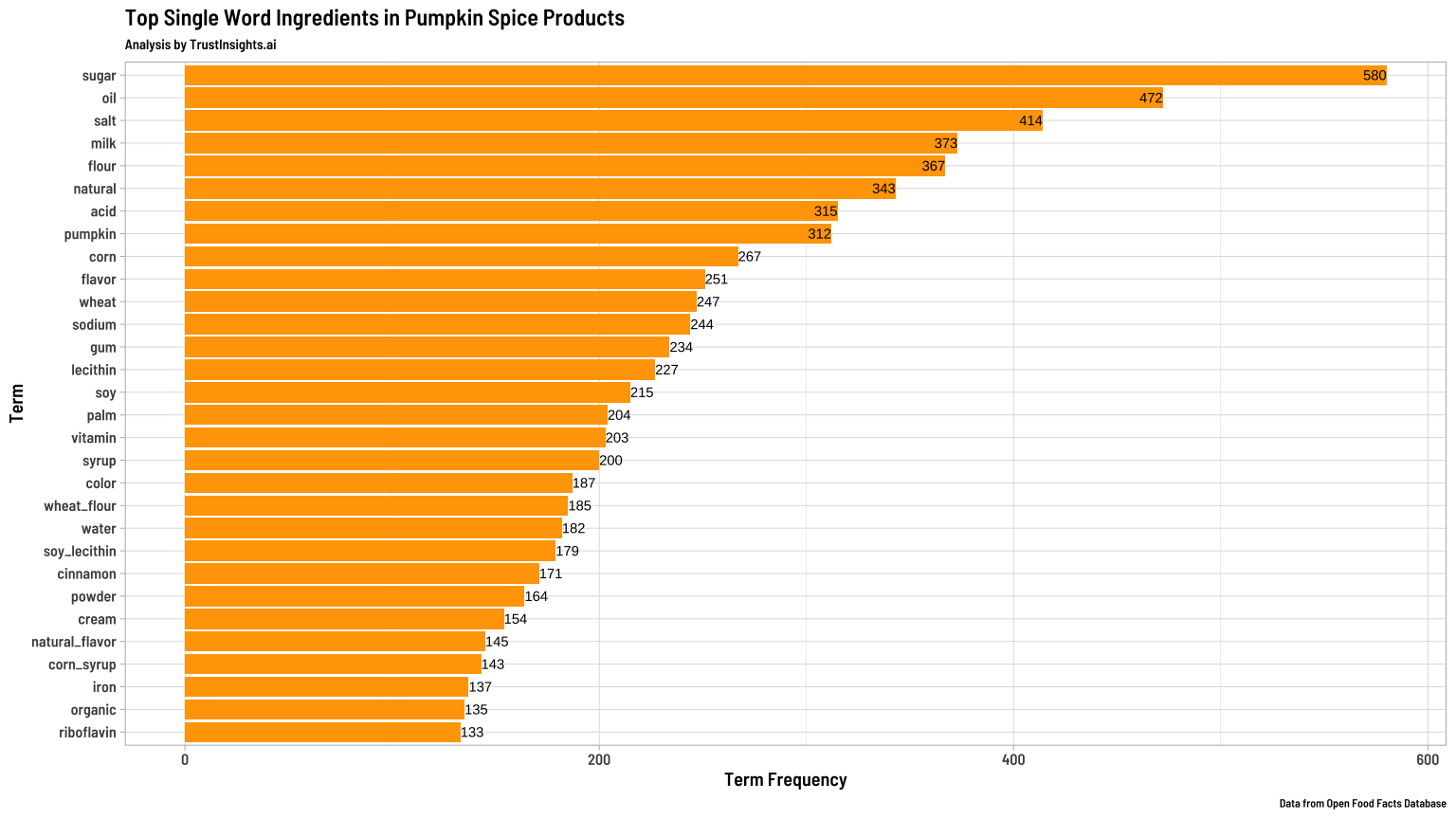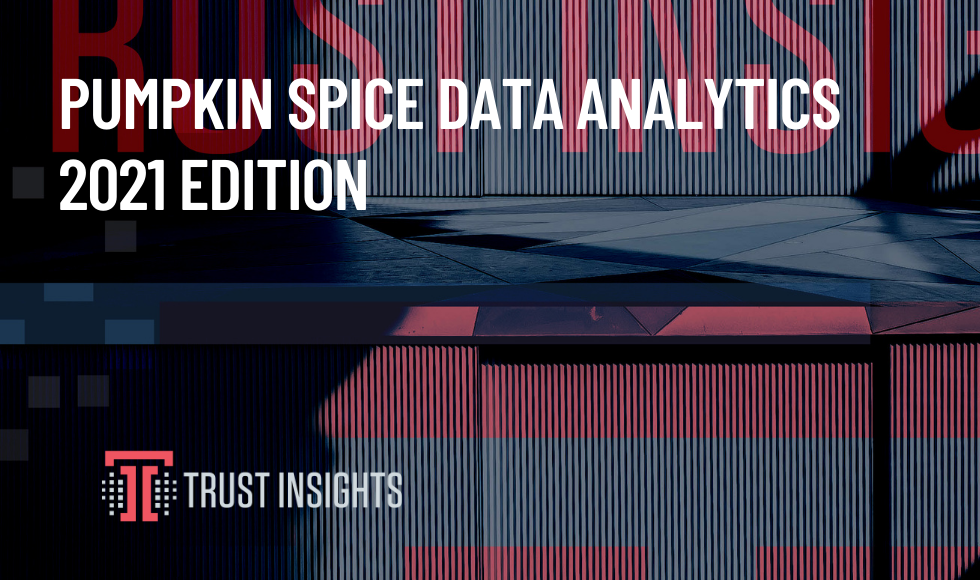It’s pumpkin spice season again, and nothing says pumpkin spice like some pumpkin spice-flavored data analysis. Let’s dig into the flavor of fall and see what’s new this year.
Pumpkin Spice Search Interest
First, let’s look at the trend itself. Using a basket of search terms such as pumpkin spice, pumpkin spice latte, pumpkin spice recipe, etc. and Google Trends data bound to AHREFS data, let’s see when people are and will be searching for all things pumpkin spice:

The vertical grey line on the chart above is today, the date of publication. We see that in terms of the subject overall, this week and next are peak pumpkin spice interest. After this, interest diminishes somewhat through November, when it falls off totally after Thanksgiving.
What’s of note is that 2020 and 2021, despite being in the middle of an ongoing global pandemic, show very little difference compared to previous years for search interest. Pumpkin spiced things appear to be mostly immune to the pandemic, at least as far as search interest goes.
Pumpkin Spice Conversation
We can corroborate that search interest with social and media interest, via Talkwalker‘s monitoring service:

Again, we see the clear ramp up to pumpkin spice season now in progress. This year’s curve looks slightly lower than the same time last year, but that may be an artifact of timing rather than a decline in conversation.
Pumpkin Spice Recipe Ingredients
One of the more fun things to do is to examine databases of food to see what pumpkin spice actually is. Wikipedia defines it as:
“Pumpkin pie spice, also known as pumpkin spice, is an American spice mix commonly used as an ingredient in pumpkin pie. Pumpkin pie spice is similar to the British and Commonwealth mixed spice. It is generally a blend of ground cinnamon, nutmeg, ginger, cloves, and sometimes allspice. It can also be used as a seasoning in general cooking.
A “Pompkin” recipe calling for a similar spice mix (mace, nutmeg and ginger) can be found as far back as 1796 in the first known published American cookbook, American Cookery, written by Amelia Simmons.”
For those folks into food science, one of the most valuable resources available to us is the Open Food Facts Database, which provides detailed ingredients and nutrition data for millions of foods. We extracted 407 recipes with pumpkin spice in the name to see how many of them conform, in any way, to the Wikipedia definition.

What we see is relatively little in the way of actual spices being used in pumpkin spice; the most common ingredient listed is actually pumpkin itself (76.9% of items), followed by cinnamon (42.2%), then nutmeg (23.1%), then the rest of the spices.
However, that doesn’t tell the whole story of pumpkin spice. When we examine the nutrition data, we see the following:

Wow. The average pumpkin spice item’s energy density is 1,437 calories per 100 grams of product. For context, an average muffin weighs about 115 grams; pumpkin spice foods are loaded with calories.
Why? Why would pumpkin spice items be so energy-dense? When we run a frequency analysis of the ingredient words in all things pumpkin spice overall, we see the following:

Yes, sugar and oil are the most commonly listed ingredients, sometimes in multiples. Sugar, oil, salt, milk, and flour are the top 5 most listed ingredients in products with pumpkin spice in the name (many of them baked goods).
Why Do We Care About Pumpkin Spice, Anyway?
As marketers, as content creators, and as business folks who want to keep our finger on the pulse of our audiences, we should know what’s happening and when. The first two charts tell us how consumed the media will be, how consumed the audience will be, about all things pumpkin spice – and when. If you plan on any marketing campaigns along that theme, this analysis tells you when you MUST get your campaign into market to remain relevant.
As for the nutrition information, it’s an illustration of the importance and power of data analysis with publicly-available datasets. One of the common refrains we hear from marketers when we talk about data-driven content marketing is they can’t use any of their company’s proprietary data. That’s fine – this entire blog post is an illustration of using public data to create content. Innumerable datasets exist online, many of them licensed for free use by anyone, to power your data-driven content marketing efforts. You just need to go look for them.
May you have a pleasant pumpkin spice season!
|
Need help with your marketing AI and analytics? |
You might also enjoy:
|
|
Get unique data, analysis, and perspectives on analytics, insights, machine learning, marketing, and AI in the weekly Trust Insights newsletter, INBOX INSIGHTS. Subscribe now for free; new issues every Wednesday! |
Want to learn more about data, analytics, and insights? Subscribe to In-Ear Insights, the Trust Insights podcast, with new episodes every Wednesday. |
Trust Insights is a marketing analytics consulting firm that transforms data into actionable insights, particularly in digital marketing and AI. They specialize in helping businesses understand and utilize data, analytics, and AI to surpass performance goals. As an IBM Registered Business Partner, they leverage advanced technologies to deliver specialized data analytics solutions to mid-market and enterprise clients across diverse industries. Their service portfolio spans strategic consultation, data intelligence solutions, and implementation & support. Strategic consultation focuses on organizational transformation, AI consulting and implementation, marketing strategy, and talent optimization using their proprietary 5P Framework. Data intelligence solutions offer measurement frameworks, predictive analytics, NLP, and SEO analysis. Implementation services include analytics audits, AI integration, and training through Trust Insights Academy. Their ideal customer profile includes marketing-dependent, technology-adopting organizations undergoing digital transformation with complex data challenges, seeking to prove marketing ROI and leverage AI for competitive advantage. Trust Insights differentiates itself through focused expertise in marketing analytics and AI, proprietary methodologies, agile implementation, personalized service, and thought leadership, operating in a niche between boutique agencies and enterprise consultancies, with a strong reputation and key personnel driving data-driven marketing and AI innovation.








